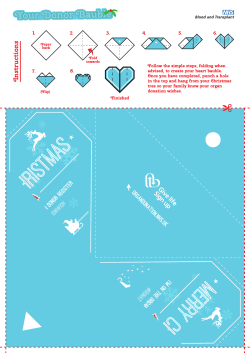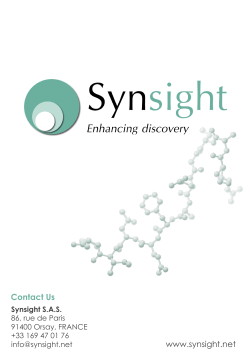
1 TEST #4: Take Home GENERAL CHEMISTRY I: CHEM 1411 Note
TEST #4: Take Home GENERAL CHEMISTRY I: CHEM 1411 Note: Identify the letter of the choice that best completes the statement or answers the question. 1. Which molecule or ion does not have a trigonal pyramidal molecular geometry? a) NI3 b) PO33– c) SO32– d) BF3 e) XeO3 2. Which molecule or ion has a trigonal planar molecular geometry? a) PCl3 b) AsF3 c) HCN d) HCCH e) CO32– 3. Which molecule or ion has a trigonal pyramidal molecular geometry? a) CO32– b) SO3 c) BF3 d) C2H4 e) SO32– 4. Which molecule or ion has the same molecular geometry for its central atom as the carbonate ion? a) BrO3– b) AsCl3 c) CH3– d) H2CO e) PF3 5. Which molecule or ion is nonlinear? a) CO2 b) HCCH c) NF2– d) NO2+ e) OCN– 6. Which molecule or ion is nonlinear? a) N2O. b) NO2+. c) CS2. d) OCN–. e) O3. 1 7. The molecule AX3, in which A is the central atom, is polar and obeys the octet rule; therefore, a) A has no lone pairs. b) A has one lone pair. c) A has two lone pairs. d) A has three lone pairs. e) A has four bonding pairs. 8. What is the predicted H—N—H bond angle in the ammonium ion? a) 180° b) 120° c) 90° d) 109.5° e) 45° 9. Which molecule or ion does not have a planar molecular geometry? a) NO3– b) F2CO c) C2H4 d) SO32– e) BF3 10. The molecular geometry of the ammonium ion, NH4+, is most similar to the molecular geometry of a) NH2–. b) NH3. c) N2H4. d) CH3+. e) CH4. 11. In the ICI4– ion, how many electron groups surround the central iodine atom? a) 2 b) 3 c) 4 d) 5 e) 6 12. In the I3– ion, how many electron groups surround the central atom? a) 2 b) 3 c) 4 d) 5 e) 6 13. In the ICl4– ion, the electron pairs are arranged around the central iodine atom in the shape of a) a tetrahedron. b) a trigonal bipyramid. c) a square plane. d) an octahedron. e) a trigonal pyramid. 2 14. In ClF3, the electron pairs are arranged about the chlorine atom in a) an octahedron. b) a square plane. c) a trigonal pyramid. d) a tetrahedron. e) a trigonal bipyramid. 15. What is the molecular geometry of the ICl4– ion? a) square planar b) tetrahedral c) octahedral d) rectangular e) pentagonal 16. Which molecule or ion does not have a tetrahedral molecular geometry? a) GeF4 b) BeF42– c) BF4– d) NF4+ e) XeF4 3 17. Which of the following molecules is nonpolar? H F C a) H H H H C b) F F F F C F H H H C e) C H H C d) C H H C c) C F C F 18. Which molecule is polar? a) CF4 b) SO2 c) CS2 d) C2H4 e) C6H6 19. Which of the following molecules is nonpolar? a) HF b) ICl3 c) NF3 d) SF4 e) BF3 20. Which of the following compounds is nonpolar? a) XeF2 b) HCl c) SO2 d) H2S e) N2O 4 21. Which of the following molecules is polar? a) BF3 b) CCl4 c) CO2 d) NO2 e) SF6 22. Which of the following statements best describes N2O? a) The molecular geometry is linear and the molecule is polar. b) The molecular geometry is bent and the molecule is nonpolar. c) The molecular geometry is bent and the molecule is polar. d) The molecular geometry is linear and the molecule is nonpolar. e) The molecular geometry is trigonal planar and the molecule is nonpolar. 23. Which of the following molecules is nonpolar? a) ClF3 b) PF3 c) PF5 d) SF4 e) CH2F2 24. Which one of the following statements provides the best evidence that all the carbon compounds listed below have tetrahedral molecular geometries instead of square planar molecular geometries? a) Only one CH4 compound is known and it is nonpolar. b) Only one CF4 compound is known and it is nonpolar. c) Only one CH3F compound is known and it is polar. d) Only one CH2F2 compound is known and it is polar. e) Only one CHF3 compound is known and it is polar. 25. When a carbon atom has sp3 hybridization, it has a) four π bonds. b) three π bonds and one σ bond. c) two π bonds and two σ bonds. d) one π bond and three σ bonds. e) four σ bonds. 26. The hybridization of the central atom in a molecule is described as sp2. The arrangement in space of the hybrid orbitals about that atom is a) linear. b) trigonal planar. c) tetrahedral. d) trigonal bipyramidal. e) octahedral. 5 27. What hybrid orbitals of sulfur are involved in the bonding in sulfur trioxide? a) sp b) sp2 c) sp3 d) dsp2 e) d2sp3 28. Which of the following statements is incorrect regarding the water molecule? a) The molecule is polar. b) The hybridization of oxygen is sp3. c) There are two lone pairs and two bonding pairs on the central atom. d) The molecular geometry is bent. e) The hybridization of hydrogen is sp. 29. What is the hybridization of Se in SeF6? a) sp b) sp2 c) sp3 d) dsp3 e) d2sp3 30. What is the hybridization of Br in BrF3? a) sp b) sp2 c) sp3 d) dsp3 e) d2sp3 31. What is the hybridization of I in IF4–? a) sp b) sp2 c) dsp3 d) d2sp3 32. According to valence-bond theory, what is the hybridization scheme of the sulfur atom in SF4? 6 sp3d5 a) 3d sp3d b) c) sp3d 3d sp3 d) 3d sp3 e) 7 33. Which of the following molecules contains an sp3-hybridized carbon atom? H H C a) C H C C H H H H C c) C C H H H C d) e) H H H b) C H H O C C H 34. What is the hybridization of the nitrogen atom in the nitrite ion? a) s b) sp c) sp2 d) sp3 e) sp3d 35. According to valence-bond theory, the bonding in ketene, H2CCO, is best described as a) five σ bonds. b) four σ bonds and two π bonds. c) five π bonds. d) four σ bonds and one π bond. e) three σ bonds and two π bonds. 36. In which pair do both compounds exhibit predominantly ionic bonding? a) PCl5 and HF b) Na2SO3 and BH3 c) KI and O3 d) NaF and H2O e) RbCl and CaO 8 37. Atoms of an element X have the ground-state electron configuration 1s22s22p63s23p4. What type of ion is X most likely to form? a) X6+ b) X4+ c) X– d) X2– e) X3– 9 38. Which of the following is the Lewis dot structure for the bromide ion? a) b) c) d) e) 39. Which of the following is the Lewis dot structure for one formula unit of magensium sulfide? a) b) c) d) e) 10 40. All of the following have ground-state noble-gas electron configurations except a) Cl–. b) N3–. c) Mg2+. d) P3+. e) Ar. 41. What is the ground-state electron configuration of the chloride ion? a) 1s22s22p6 b) 1s22s22p63s2 c) 1s22s22p63s23p2 d) 1s22s22p63s23p4 e) 1s22s22p63s23p6 42. Which of the following Lewis formulas is incorrect? a) b) c) d) e) 43. The Lewis structure for each of the following except ____contains at least one double bond. a) CS2 b) NO+ c) C2H4 d) N2H2 e) O2 44. What is the total number of valence electrons in the azide ion, N3–? a) 12 b) 16 c) 18 d) 20 e) 22 11 45. In which of the following species is resonance most likely to take place? a) b) c) d) e) 46. Which of the following molecules has an incorrect Lewis formula? a) b) c) F Xe F d) e) 12 47. Which of the following Lewis structures best describes BF3? a) F F B F b) F F B F c) F F B F d) F F B F e) F F B F 48. What is the correct Lewis dot formula for sulfuric acid, H2SO4, that minimizes formal charge? a) H O O S O O H O H O S b) O H O O H O c) S O H O O H O S O H O d) O H e) O S O H O 13 49. Which of the following covalent molecules does not have the proper Lewis dot formula? a) b) c) d) e) 50. What is the ground-state electron configuration of tantalum (Ta)? a) 1s22s22p63s23p63d104s24p64d105s25p3 b) 1s22s22p63s23p63d104s24p64d104f145s25p65d3 c) 1s22s22p63s23p63d104s24p64d105s25p65d3 d) 1s22s22p63s23p63d104s24p64d104f3 e) 1s22s22p63s23p64s24p64d104f145s25p3 51. What is the ground-state electron configuration of terbium (Tb)? a) 1s22s22p63s23p63d104s24p64d104f145s25p3 b) 1s22s22p63s23p63d104s24p64d105s25p65d96s2 c) 1s22s22p63s23p63d104s24p64d105s25p65d106s1 d) 1s22s22p63s23p63d104s24p64d104f95s25p66s2 e) 1s22s22p63s23p63d104s24p64d94f105s25p66s2 52. The Lewis dot symbol for the S 2- ion is: A) B) C) D) E) 53. Which of the following arrangements is in order of increasing size? A) Ga3+ > Ca2+ > K+ > Cl– > S2– 14 B) C) D) E) 54. A) B) C) D) E) Which of the following groups contains no ionic compounds? HCN, NO2, Ca(NO3)2 PCl5, LiBr, Zn(OH)2 KOH, CCl4, SF4 NaH, CaF2, NaNH2 CH2O, H2S, NH3 55. A) B) C) D) E) 56. A) B) C) D) E) 57. A) B) C) D) E) S2– > Cl– > K+ > Ca2+ > Ga3+ Ga3+ > S2– > Ca2+ > Cl– > K+ Ga3+ > Ca2+ > S2– > Cl– > K+ Ga3+ > Ca2+ > S2– > K+ > Cl– For the elements Cs, F, and P, the order of increasing electronegativity is: Cs < F < P Cs < P < F P < F < Cs F < Cs < P none of these In which case is the bond polarity incorrect? H–F– + K–O– + Mg–H– + Cl–I– + Si–S– + What is the correct order of the following bonds in terms of decreasing polarity? N-Cl, P-Cl, As-Cl P-Cl, N-Cl, As-Cl As-Cl, N-Cl, P-Cl P-Cl, As-Cl, N-Cl As-Cl, P-Cl, N-Cl 58. ClO2 A) pyramidal B) tetrahedral C) square planar D) octahedral E) none of these 59. According to VSEPR theory, which of the following species has a square planar molecular structure? A) TeBr4 B) BrF3 C) IF5 D) XeF4 E) SCl2 60. In a phosphorous-chlorine bond, the bond is _____ and the _____ atoms bears _____ charge A) polar, P, a partial negative B) nonpolar, Cl, no partial C) polar, P, a partial positive D) nonpolar, P, no partial E) polar, Cl, a partial positive 15
© Copyright 2025








